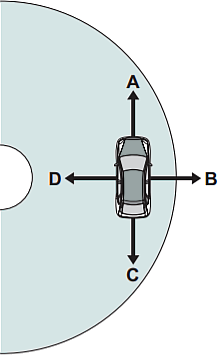GCSE Questions: Circular Motion Q3. (a) The diagram shows a car travelling around a bend in the road. The car is travelling at a constant speed.
There is a resultant force acting on the car. This resultant force is called the centripetal force.
[1 mark]
[1 mark]
[2 marks] (b) The photo shows a racing car.
A racing car should not roll over when racing. State two features of the car that make it difficult for the car to roll over. To be stable the car needs to have a wide (wheel) base [2 marks] [6 Marks TOTAL] |
Follow me...
|







